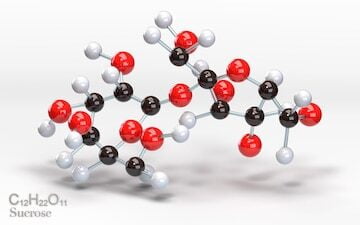
Image Source: FreeImages
The reactivity of chemical compounds is measured by the heat that they release in a chemical reaction. The hotter the reaction, the more reactive the compounds involved are. There are three primary measures of reactivity: how fast a chemical changes when combined with another substance, how much heat is released as a result of this change, and how likely it is for two substances to combine in an explosive reaction. The three most reactive chemical compounds can be found below, along with examples of their use and dangers posed if not handled correctly. Aldehydes have many uses and can be found in perfumes, soaps, lotions, and cleaning products. They combine most readily with proteins but have limited contact with metals such as iron or zinc. When exposed to air they form hydrazine, which is highly explosive.
Formaldehyde
Formaldehyde is the simplest aldehyde, but it is also the most commonly used aldehyde. It is produced naturally in the human body and is also a component of many household cleaning products. When formaldehyde reacts with proteins, it can form formaldehyde adducts. These adducts can be used to test for DNA. Formaldehyde is mildly toxic when ingested, but it is usually not fatal. It can also cause skin irritation and respiratory problems when inhaled. It is most dangerous when it reacts with proteins. This can cause respiratory issues, skin irritation, and even damage to the eyes. It can also cause allergic reactions in some people. Formaldehyde is extremely flammable. It can be extremely dangerous when it is in the air because it can be dangerous at very low concentrations.
Benzyl alcohol
Benzyl alcohol is another aldehyde. It is found in many products, such as shampoos and skin lotions. When benzyl alcohol comes into contact with proteins, it can react to form benzyl adducts. These adducts can be used to detect DNA. Benzyl alcohol is also found in many foods and drinks, such as vanilla extract. When ingested, benzyl alcohol is quickly absorbed into the bloodstream. It is metabolized in the liver, where enzymatic breakdown products are eventually released in the urine. Benzyl alcohol is not significantly absorbed through the skin. It is not significantly flammable, but it does have potent narcotic properties when ingested.
Propanediol
Propanediol is a simple alcohol used in a wide variety of industrial processes. When it reacts with proteins, it can form a wide variety of adducts. This makes it useful as a reagent in scientific experiments. When it comes in contact with iron or zinc, it can react to form explosive hydrogen gas.
Dangers of aldehydes
Aldehydes are highly reactive compounds. They are used in many industrial and household applications. However, they can also be dangerous if they are not treated with care. Aldehydes can react with and break down proteins. They can also react with DNA. This can have serious biological implications. It can cause tissue damage, skin irritation, and even mutations that may lead to cancer. Aldehydes can also be explosive when combined with certain metals. This requires special care when handling these compounds in a lab.
Benzyl Chloride
Benzyl chloride is one of the most dangerous aldehydes. It is used for many industrial applications, such as the production of other chemicals, plastics, and dyes. It is also used in the production of drugs and pesticides. When benzyl chloride comes into contact with iron or zinc, it can form explosive hydrogen gas. When it comes into contact with most proteins, it forms covalent adducts. These adducts can be used to determine the structure of a protein.
Propanediol Exhaust Fumes and Vapor
Propanediol is not significantly flammable in its pure form, but it can generate explosive fumes when it undergoes combustion. When it burns, it produces carbon monoxide, carbon dioxide, and water.
Conclusions
Aldehydes are some of the most reactive chemical compounds on earth. They can be used in a wide variety of applications, but their reactivity also makes them dangerous. They can break down proteins and DNA, generate explosive hydrogen gas when combined with certain metals, and produce explosive fumes when burned. These are the three most reactive chemical compounds: formaldehyde, benzyl alcohol, and propanediol. They are all used in industrial applications and can be found in many household cleaning products. These chemicals are dangerous when not treated with care, as they can break down proteins and DNA, generate explosive hydrogen gas when combined with certain metals, and produce explosive fumes when burned.




nice